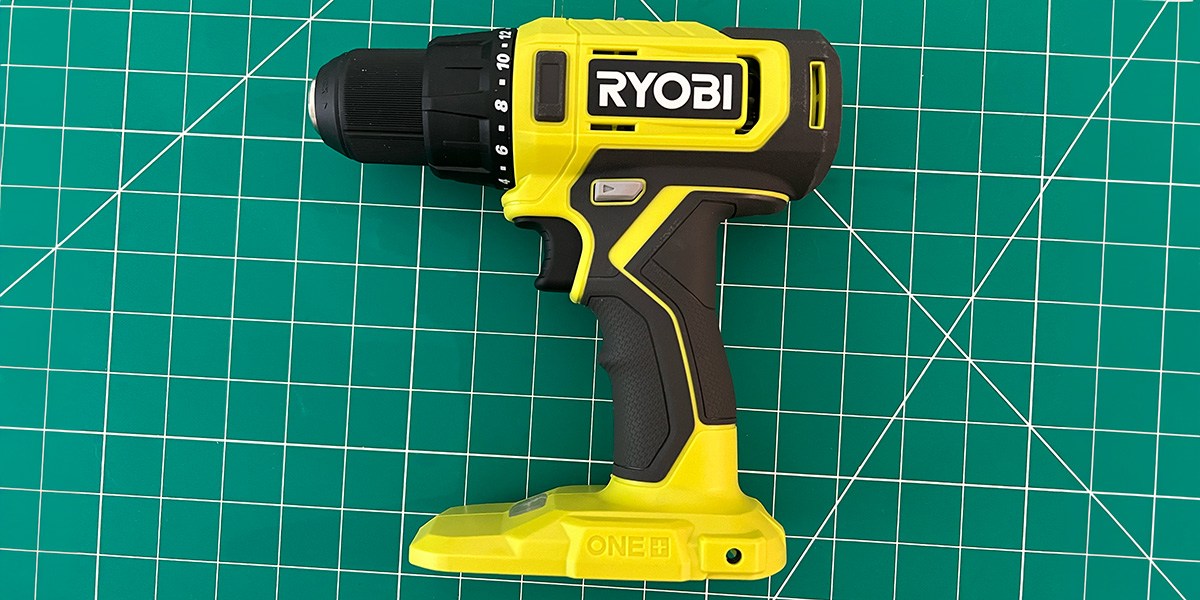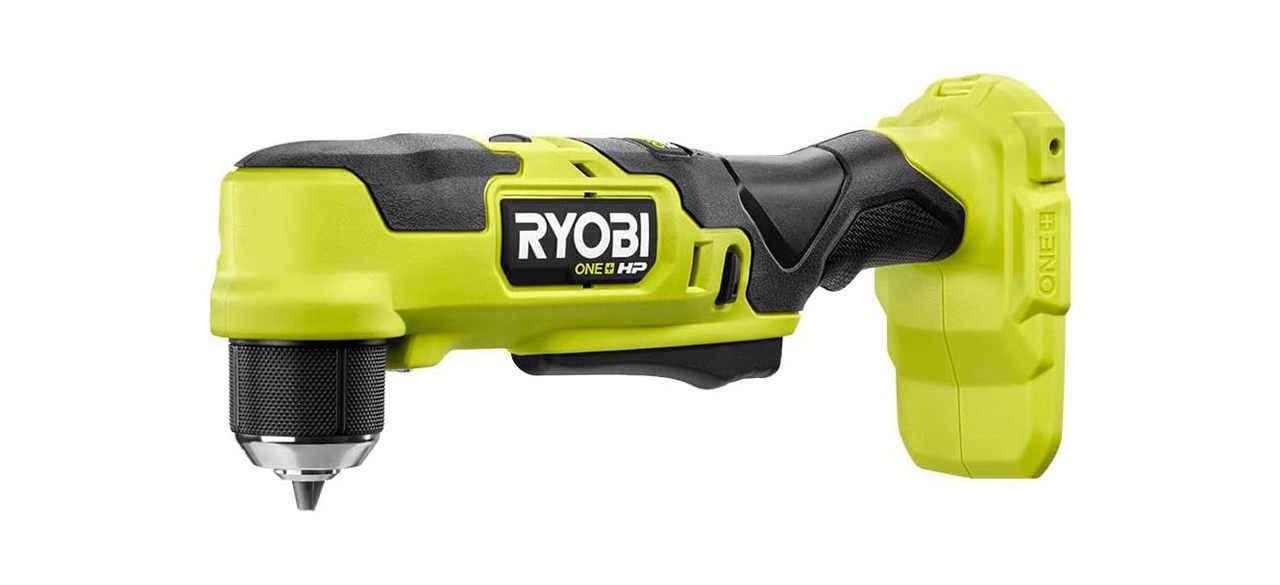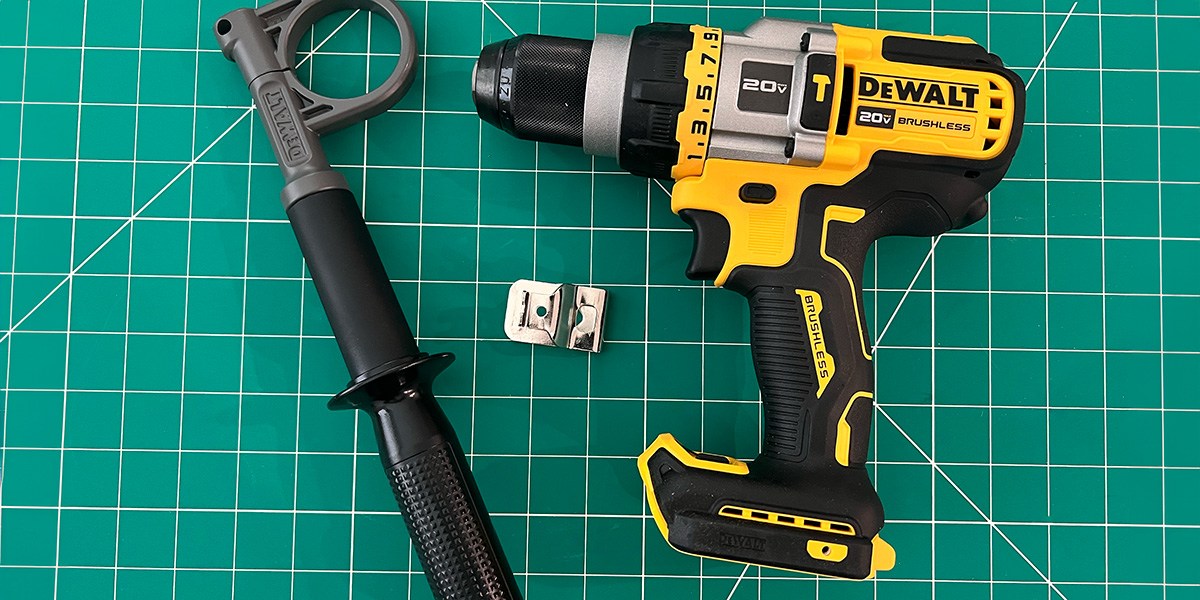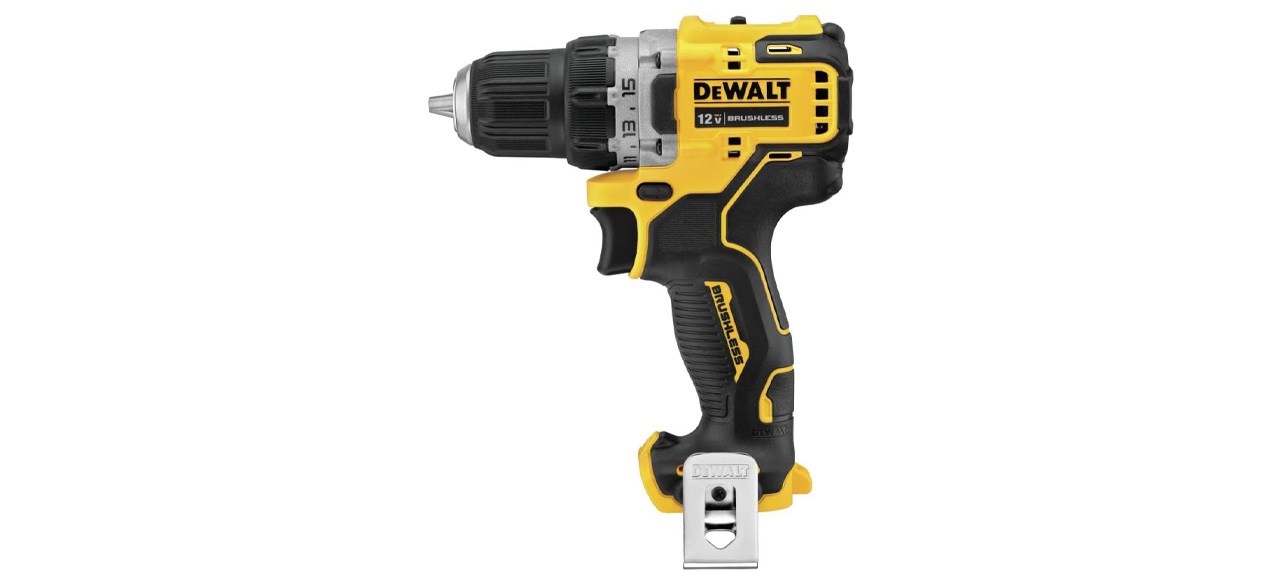Ryobi and DeWalt both make excellent drills, but Ryobi has an ace up its sleeve
Ryobi and DeWalt are two of today’s best tool-making companies, though they sit on opposite ends of the price spectrum: Ryobi on the budget side and DeWalt on the pricier side. But does the difference in price add up to a substantial difference in quality?
The BestReviews Testing Lab put drills from both brands to the test, the DeWalt FlexVolt Advantage 20-Volt Max Hammer Drill and the Ryobi One+ 18-Volt Drill, and found their power and quality to be similar. For example, our driving test using wood and lag screws had virtually identical results, though the DeWalt FlexVolt operated more smoothly than the Ryobi One+.
Though the DeWalt excelled in drilling performance overall, where Ryobi has a significant advantage is its batteries. Most of them can be swapped between various Ryobi tools, which is perfect for anyone who wants to build a tool collection on a budget. But if you’re looking for just one or two high-quality drills, you won’t regret spending a bit more on DeWalt.
Ryobi vs. DeWalt: What they do well
Both the Ryobi and DeWalt brands and drills are packed with features to love. Here are some of the best.
Ryobi benefits
- Battery compatibility: Many of Ryobi’s products, including drills, use the same line of batteries, making it easier and cheaper to add Ryobi tools once you have a good battery and charger.
- Durability: Ryboi makes some of the most durable drills, sustaining only mild scratches and scuffs in our drop tests.
- Cost: Ryobi products are some of the most affordable in all product categories. The One+ 18-Volt Drill we tested, for example, is about a third of the cost of the DeWalt we tested, despite their similar performance.
DeWalt benefits
- Versatility: Many of DeWalt’s products pack in extra features and/or power so they can handle more than one type of job. For example, the FlexVolt Advantage we tested can be used as a hammer drill in addition to drilling and driving.
- Innovation: DeWalt is well known for innovating, especially with batteries, to find better and faster ways to work. The battery we used in our tests, for instance, was smaller and lighter than similar batteries from other brands.
- Brand recognition: DeWalt is one of the most recognized and respected tool brands and has been for decades. If you have a DIY or home-improvement video channel, it could lend you a little extra credibility.
What they could improve
Nothing is perfect, and that’s true of Ryobi and DeWalt drills.
Ryobi drawbacks
- Battery performance: The battery life of the Ryobi 18-volt was a little over 30 minutes with the two-amp-hour battery we bought for testing. This is pretty good, but it isn’t outstanding.
- Extra features and accessories: Ryobi drills don’t come with many extras. The most you can usually expect is a work light.
DeWalt drawbacks
- Power: Some drills have much higher power than DeWalt. For example, the Milwaukee M18 we tested had 800 maximum watts of power, while the DeWalt FlexVolt offers 300 watts.
- Durability: The DeWalt FlexVolt was the only drill we tested that came away with more than minor scuffs from our drop tests. It sustained a small dent in the tip, though there was no loss of functionality.
Top Ryobi models
The Ryobi we tested, the Ryobi One+ 18-Volt Cordless Drill, is perfectly situated as an affordable drill with the power and ability of drills that cost more. However, it can’t handle every task. That’s when you need the uniquely shaped Ryobi One+ 18-Volt Right Angle Drill to work at those awkward angles.
Ryobi One+ 18-Volt Cordless Drill
If you drop the Ryobi One+ 18-Volt Cordless Drill without a battery on, the plastic “foot” can bounce off the ground and go flying. Be careful.
Product specifications
Maximum Rotational Speed: 1,750 rpm | Voltage: 18 | Gears: 2 | LED Work Light: Yes
The Ryobi’s drilling performance was excellent, though it did take longer to complete some tasks than other drills. For example, it took 30 seconds to drill with a hole saw through a two-by-four, while the DeWalt FlexVolt took 15 seconds. Similarly, the Ryobi’s metal drilling performance took 13 seconds with a half-inch bit and five seconds with a quarter-inch bit when the DeWalt only needed an average of five seconds regardless of the bit size. The Ryobi had no issues using a paddle bit, though, taking only five seconds.
Its driving performance was slightly worse but still solid. The lag screw test saw the drill nearly wrench itself free from our grip, while the wood screw test took significant force and wrist control to keep the drill steady. It only took five seconds on average to drill a three-inch wood screw, but it was still tiring.
One area of some concern is the battery life. A two-amp-hour battery lasted a little over 30 minutes. This is good, but we think it could be better. Other than this, the drill was generally comfortable to use, with a reasonable heft. We were a little disappointed with its LED work light, which was noticeably dim, and the drill doesn’t come with a belt clip. It did perform perfectly in our drop tests, though, sustaining almost no damage at all.
Ryobi One+ HP 18-Volt Right-Angle Drill
Just because the Ryobi One+ HP 18-Volt Right Angle Drill is meant for use in tight spaces doesn’t mean you can’t use it like a regular drill in other situations.
Product specifications
Maximum Rotational Speed: 1,700 rpm | Voltage: 18 | Gears: 2 | LED Work Light: Yes
The best thing about this drill is its shape. Having a long, narrow drill that can get into the tightest spaces is a game changer for anyone who’s ever tried to drill or drive something in cramped quarters. Its high rotational speed and up to 350 pounds of torque ensure that tasks get done, and the large variable speed trigger gives you maximum control. It has two gears to easily switch between drilling and driving, though it lacks clutch settings. A solid LED work light below the tip rounds out its extra features.
Top DeWalt models
The DeWalt we tested, the FlexVolt Advantage, has more than enough power to handle almost any DIY or home repair task. And it has no issues drilling through concrete. If you’re looking for a tool that’s designed more for average home maintenance tasks or assembling flat-pack furniture, consider the DeWalt Xtreme 12-Volt Drill instead.
DeWalt FlexVolt Advantage 20-Volt Max Hammer Drill
Each one of the three gears on the DeWalt FlexVolt Advantage 20-Volt Max Hammer Drill is meant for a specific task. Double-check that you’re in the right gear to avoid damaging the drill, your target and you.
Product specifications
Maximum Rotational Speed: 2,250 rpm | Voltage: 20 | Gears: 3 | LED Work Light: Yes
This drill’s results in both drilling and driving tests were strong, though not without flaws. For example, the paddle bit test experienced significant catching, and the chuck opened up. This was quick to fix but still frustrating. The times it didn’t catch took about five seconds to get through a two-by-four. We also had to put some pressure on the drill to get it to go through 16-gauge sheet metal. Still, that test only took an average of five seconds to punch a hole. The last drilling test involved using a hole saw to make a hole in a two-by-four. That took 15 seconds, which was roughly twice as fast as other drills we tested. Finally, its concrete hammer drilling took only four seconds on average to make a hole.
The driving performance was similarly strong. It took about five seconds to put a three-inch wood screw into a four-by-four. A five-inch lag screw needed a pilot hole, which the DeWalt managed easily, followed by a second or two to shoot the lag screw down the hole.
The drill has a nice handle with a good grip, and it was comfortable to use throughout all our tests. At about 4.75 pounds with the battery, it was a little heavy, so we did experience some arm fatigue after a while. It comes with a belt clip, so we could hang it easily between tests. The LED work light, with three settings instead of one, performed the best of all the drills we tested.
This drill does have some minor durability concerns. Multiple drop tests resulted in the usual scratches and scuffs, but it also had a dent on the tip, the only drill to sustain this kind of moderate damage. It still functioned flawlessly, however. Finally, the life of its three-amp-hour battery is great, at about 45 minutes.
DeWalt Xtreme 12-Volt Max Drill
The small size and light weight of the DeWalt Xtreme 12-Volt Max Drill make it a top candidate for use at those times when you have lots of tasks to complete.
Product specifications
Maximum Rotational Speed: 1,500 rpm | Voltage: 12 | Gears: 2 | LED Work Light: Yes
Don’t overlook the DeWalt Xtreme drill because it’s small. It still has more than enough power at 300 watts and a high rotational maximum of 1,500 rpm, enough for all your average maintenance tasks. It’s also a top choice for getting into tough-to-reach spots that a larger, more powerful drill would struggle to fit in.
It doesn’t hurt that it has 15 clutch settings for fine-tuning your approach. The LED work light and included belt clip round out the extra benefits of this drill.
Ryobi One+ 18-Volt Cordless Drill vs. DeWalt FlexVolt Advantage 20-Volt Max Hammer Drill
These two drills we tested are both excellent choices if you’re looking for a drill for DIY projects. They each have strong rotational maximums and good power, so you shouldn’t have issues with any common task. However, the Ryobi did take a little more effort to hold steady. Because of this, we’d say the DeWalt has the edge if you only want to buy one drill. However, the Ryobi would be a perfect addition to a Ryobi set if you eventually want a fleet of battery-operated tools.
Ryobi One+ HP 18-Volt Right Angle Drill vs. DeWalt Xtreme 12-Volt Max Drill
These drills are almost tied for being the best small drill for tight spaces. The Ryobi offers a higher maximum rpm and higher voltage, meaning it has the edge on raw power. However, the right-angle shape of the drill is a burden if you’re not using it in tight spaces since it can make it harder to position. In these cases, you’ll want the DeWalt, despite its slightly lower power. This also makes the DeWalt a better pick if you only want one drill.
Ryobi vs. DeWalt functionality
Drills are small tools with a specific capability, so there isn’t much difference in functionality from one drill to the next. It basically comes down to power settings, the presence of a work light and any accessories that come with the drill.
Power settings comparison
Power settings can be split between clutch settings and gears.
- Clutch: The Ryobi has 23 clutch settings compared to the DeWalt FlexVolt’s surprisingly limited 11. They both have a drilling clutch setting.
- Gears: The Ryobi has two gears like most drills: one for drilling and one for driving. The DeWalt FlexVolt has a third gear for hammer drilling through tough materials like concrete.
LED work light comparison
When it came to their work lights, the DeWalt has the Ryobi beat. The DeWalt FlexVolt has three LED settings, including one that leaves the spotlight on so you can look at your task. The Ryobi 18-Volt Drill’s LED light is too dim, even without comparing it to the DeWalt’s.
Accessories comparison
This is another area where DeWalt has the edge, though it’s one that you pay extra for. The DeWalt FlexVolt comes with an extra handle for hammer drilling and a belt clip to attach to the drill. Most other DeWalts come with a belt clip. The Ryobi 18-volt drill comes with no extras.
Pricing
Ryobi drills are competitively priced below most other drill brands, including DeWalt. They typically cost $40 to $90 if they don’t include any extras like batteries. DeWalt’s prices are closer to $60 to $150. Ryobi bundles are also more affordable, and few cost more than about $150. DeWalt bundles usually start at around $150 and can go up to $300 and more.
The cost of the drills in this article:
- Ryobi One+ 18-Volt Cordless Drill: $53.99
- Ryobi One+ HP 18-Volt Right-Angle Drill: $89.99
- DeWalt FlexVolt Advantage 20-Volt Max Hammer Drill: $139.99
- DeWalt Xtreme 12-Volt Max Drill: $61.99
Bottom line
Both brands make top-notch products that can easily complete routine tasks. Your choice might depend on the number of tools you plan on collecting. If you only need one or two, you can be confident splurging on the pricier DeWalt. If you want to start a tool collection to handle multiple different tasks, the Ryobi is a better choice for two reasons: First, you can save money without sacrificing quality, and second, Ryobi tools run off the same batteries.
Prices listed reflect time and date of publication and are subject to change.
Check out our Daily Deals for the best products at the best prices and sign up here to receive the BestReviews weekly newsletter full of shopping inspo and sales.
Copyright 2024 BestReviews, a Nexstar company. All rights reserved.





